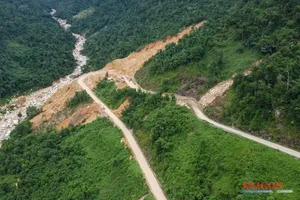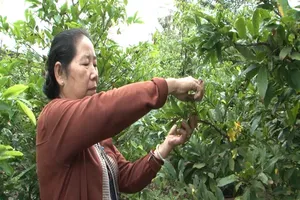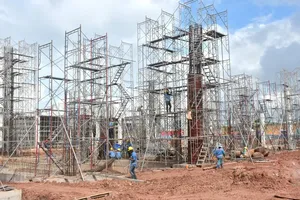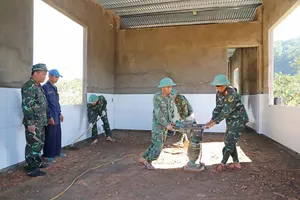
At present, the floodwater level is slowly rising; the highest level in Tien river at Tan Chau Station in An Giang province to the west is 3.75 meter below the second-stage warning level by 0.25 meter while it is 3.44 meter in Hau River at Chau Doc Station under the second –stage warning level by 0.06 meter.
Meteorologists warned that floodwaters in the Mekong delta would rise in some next days. Specifically, on October 8, the highest water level in Tien River at Tan Chau and Chau Doc Stations would be 3.86 meter and 3.57 meter respectively, below the second-stage warning level by 0.14 meter and exceeding the second-stage warning level by 0.07 meter.
In downstream sections of Mekong River, floodwater are warned to rise over the second-stage warning level. It is highly likely that low-lying areas will suffer inundation and floodwater will threaten embankment system in the region.
Weather forecasters said that seasonal flood peak will be in the middle of October and it could be 0.4-0.8 higher than last year.
Taking advantage of the time when floodwater slowly rise, farmers in An Giang, Dong Thap and Long An provinces were run off their feet to harvest the crop to cut down losses.
The Steering Committee for Natural Disaster Prevention and Rescue in Long An said that of 22,927 hectares of winter-spring rice crop, farmers in districts Tan Hung, Moc Hoa, Tan Thanh and Kien Tuong Town have harvested 13,434 hectare of rice. They will continue harvesting in the middle of October. To protect 3,590 hectares of rice, farmers will reinforce embankment.
Meanwhile, their peers in Tien Giang, Hau Giang, Vinh Long, Dong Thap provinces are busy carrying out measures for flood prevention.
Head of the Department of Agriculture and Rural Development in Lai Vung District Mai Quoc Hau said farmers in the district grow around 6,700 hectare orchard including tangerine –a specialty of the district- which will be dead in flood season.
Accordingly, to protect the orchards from rising floodwaters in next days, the local agriculture and government, inhabitants continuously reinforce dykes costing nearly VND1 billion ($42,867).
























